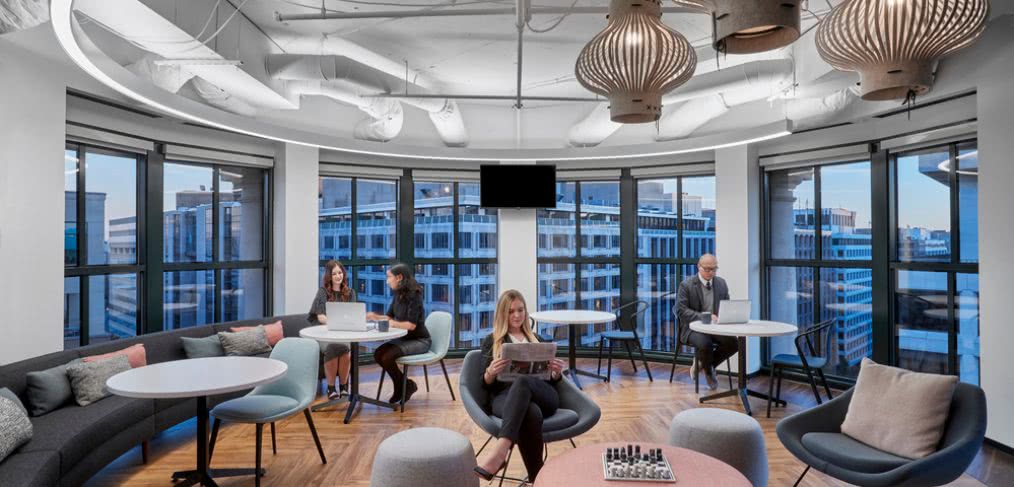
Design News You Can Use—Health + Flexible Workplace Edition
Looking for a major dose of news you can use? In this edition of Design News You Can Use, Workplace Strategist Joelle Jach explores wellness factors, flexibility and the good and the bad of workplace evolution.
Health and wealth: As more people become interested in workplace wellness, we’re starting to see increases in biophilic design. Incorporating nature may not seem appropriate in the workplace, but studies show connections to nature can benefit health, productivity and workplace effectiveness.
Mess around: As much as I hate to admit it, I’m a bit of a neat freak, but I know creativity is often associated with messiness. So why do so many companies institute a clean desk policy? While these guidelines help keep spaces tidy, the secret may be more about allowing employees to exhibit control and customizability in the workspace.
Law and order: Law offices have long been bastions of traditional design – from wood paneling to heavy furniture, they tend to be old-fashioned. However, the industry is starting to see a shift – CRTKL’s Liz Wozny helps explain how law offices are becoming more hip and modern, offering everything from amenities to sleek new designs.
Whoops: While Apple’s new headquarters has gotten plenty of press for its futuristic design, things aren’t as polished as they seem. According to multiple reports, the facility boasts plenty of seamless glass walls, and people are running into them left and right. Apple reportedly shut down attempts to make the glass more visible, citing aesthetic concerns.
Believe me: Meetings and presentations are nerve-wracking – not only do you have to remember what to say, but you have to appear as though you know what you’re talking about. If you’re looking to boost your credibility, these tips are a good place to start – trust me, I know what I’m talking about.
All-inclusive: If you thought amenity-rich work environments like WeWork were as good as it gets, think again. In an effort to attract and retain customers, coworking spaces are getting creative with offerings. From church services to immigration support, there’s no shortage of available benefits for the prospective coworker.
Now you see me: When we think about the workforce of the future, we tend to consider working alongside robots. But forget about robots for a second – what if we no longer work alongside humans? With advances in virtual reality and workplace flexibility, the future of work may spell the end of the coworker as we know it.
In the age of Millennials: Long the target of sweeping generalizations and general vitriol, millennials have been everyone’s favorite love-to-hate group for a while now. But as millennials age into the workforce and are supplanted with the younger Generation Z, we may find that millennials actually can and do contribute to the workplace.
Free falling: Contract work has become immensely popular in recent years, thanks in large part to the flexibility it provides. But with a significant percentage of the workforce in contract jobs, many employees are concerned with few or no benefits, lower job security and few social resources.
Far, far away: While the flexibility of remote work can be great, it also poses a challenge for those still in the office. Trying to get ahold of remote coworkers can be tough – after all, it’s not as though you can just pop by their desks! Changing communication styles can help with remote collaboration, bringing the whole workforce together.
